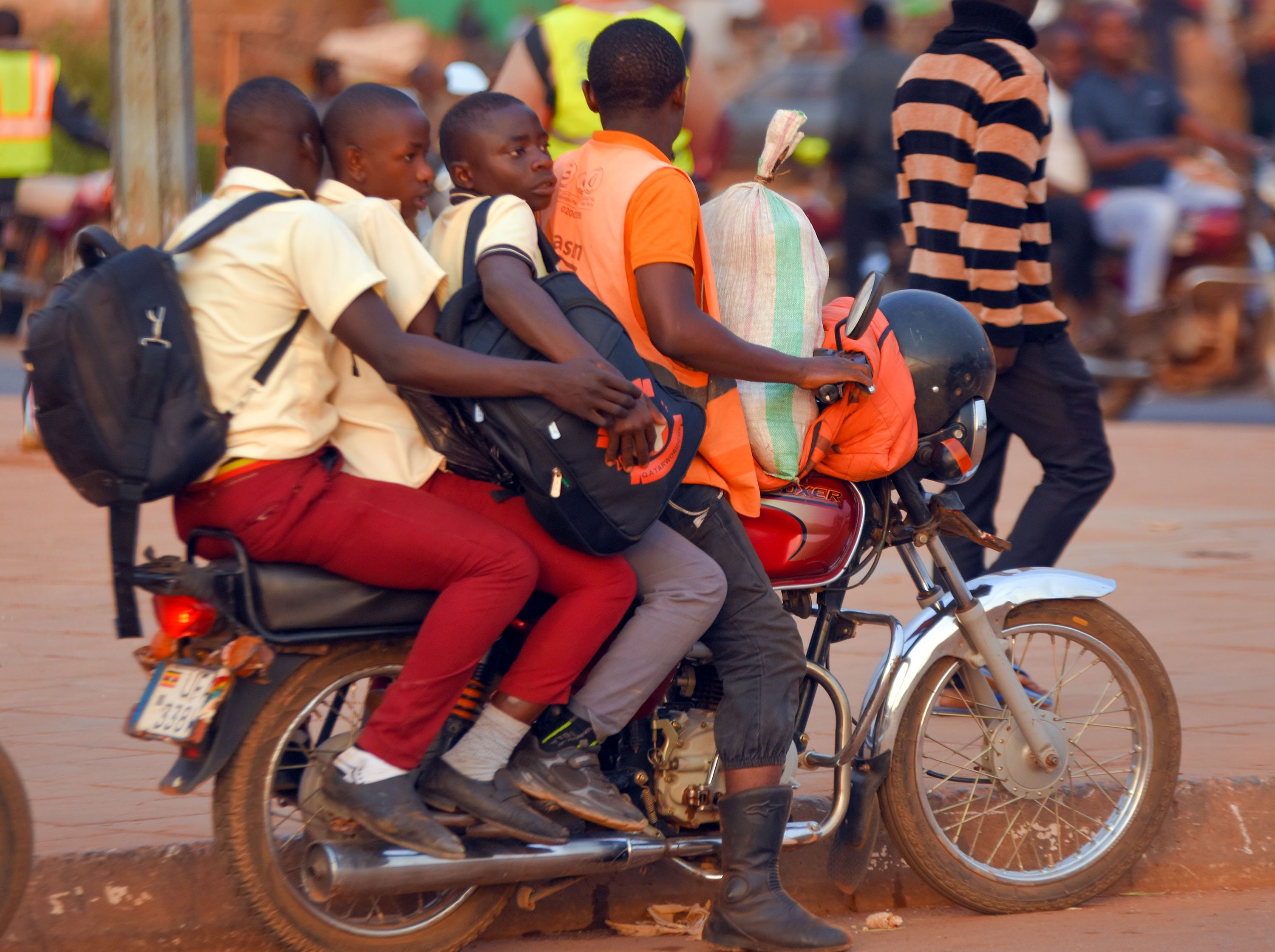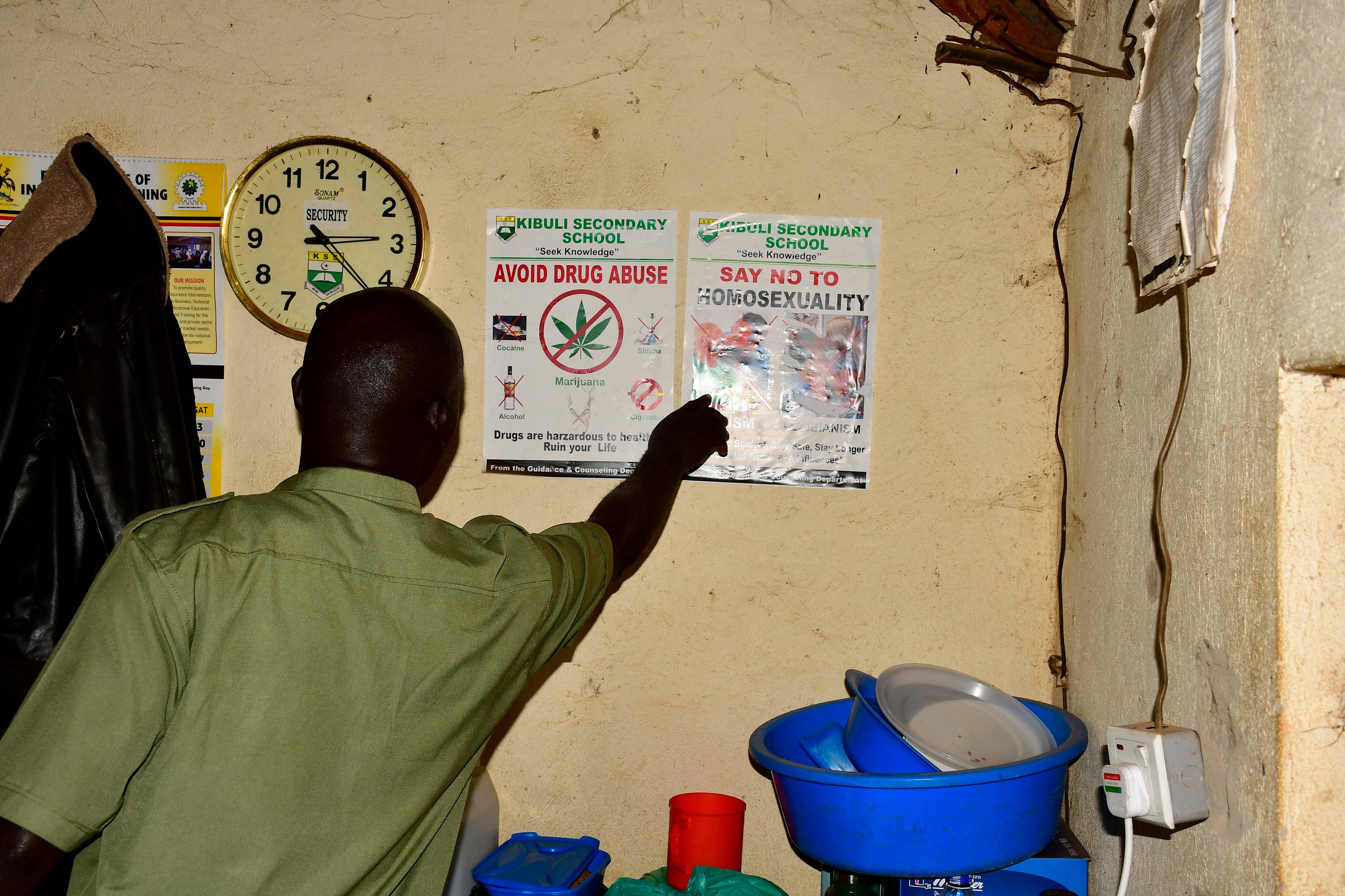What to consider when choosing a new school

Students on a boda boda in Busega, Rubaga Division, in Kampala on February 5, 2023. PHOTO/MICHAEL KAKUMIRIZI
What you need to know:
- Margaret Ssenyonga, a mother says her biggest concern at the time of enrolling her three-year old daughter in a kindergarten was convenience.
Very often, we have heard stories about schools and how they can make or kill you. And ultimately in our pursuit of education, the school we go to is a major determinant of our academic and often success in life.
So in case you have been wondering what a good school should look like, here are a few pointers to consider for beginners, continuous students in need of a change and those transiting from one academic level to another.
Choosing a school for your child
Margaret Ssenyonga, a mother says her biggest concern at the time of enrolling her three-year old daughter in a kindergarten was convenience. “I needed a school that was convenient to drop and pick her up on my way to or from work, she shares adding that she put a lot of emphasis on schools located on Jinja main road.
In addition, she believes that by the time she took her daughter to school, she knew things even her class didn’t teach, so she needed a school that would help develop her further than slowing her down.
“I went to three different schools and eventually settled for one – it wasn’t the best-looking of all, but when I talked to the school heads – a husband and wife, I know my child would be safe there. They were elderly, and they had studied Early Childhood Development but they also engaged in the teaching of the children and not only the administrative work. Then, I was sure they would deliver what I wanted,” Ssenyonga notes.
Furthermore, she wanted a school that had a daycare that was flexible to keep her daughter until she picked her up but also not very expensive.
“Next, the school fees was fair in comparison to some schools that inflate the figures. They also had a few children in class, which meant our child would be getting the academic attention she needed,” says Ssenyonga.
Preschool
When it comes to Early Childhood Development Centers (ECDCs) Ismail Musoke an Instructor at Madrasa Early Childhood Development Institute notes that in assessing quality of an ECD Centre, there are both invisible and visible things that can be observable by the parent;
Safety and security: “Some people have ECD Centers in what was previously their home or in rented locations just next to the road with no fencing, or with barbed wire fencing – which is not safe for children either. Under security, a parent should be clear on who is responsible for picking and dropping the child to and from school,” he says.
The environment, facilities and structures: Musoke notes that this should be conducive for learning in both class and cumulatively. “Does it encourage incidental learning where children learn through discovering? Indicators like swings, a play area should be in place to help develop children’s mortar skills,” he notes.
Facilities and structures at the center should also be considered. “Facilities like classrooms, toilets, sleeping area, and the general environment around the school. The lighting and ventilation of classes and the class arrangement should allow seating, and for on-floor activities. Look at how the children feed/ diet. Are the facilities where they feed from in good shape? There should also be separate rooms for each class of Baby, Middle and Top,” he advises. The child teacher ratio for ECD should be a maximum of 1:20 and not over 40 0r 50.
Furthermore, Musoke notes that attention should be given to the administration. “Who are the proprietors of the centre, do they follow government policies? It is okay to ask the administrators for the curriculum they follow and because ECD is meant to prepare children for school, they should be able to explain the competences a child will be gaining. What are the learning areas that the curriculum covers? – this should be the government gazatted to deliver quality.”
In the same vein, pay attention to the people you will be entrusting your child to. “You may not know all the details but their presentation will give you a hint. All ECD teachers should be from an accredited institution,” Musoke notes.
Primary and secondary
Aisha Nakku the head teacher Onward and Upward Secondary School Buloba says that among the very important things parents should pay attention to would be the quality of education extended to learners.
“Look at the quality of the teaching staff. The care and attention given to learners because for a secondary or primary school, the quantity of time teachers give to students both in and outside the class is important. It should be noted that regardless of which school, a child can pass as long as the teacher is available to teach and be consulted further,” she says.
Discipline: “What discipline is exhibited by learners, teachers and administrators from that school? If these three have discipline, then learning is able to take place in such a school and thus your child will be in good hands,” Nakku says.
School location: “Communities also affect learners in schools. If the community is one characterised by bars and drug abusers, students cannot concentrate and they are often influenced by different aspects of those communities like their peers. A parent should look at where the school is located to avoid community vices that may be passed on to the student,” she advises.
Security/ child protection: These should be respected in the school by both the teaching and none teaching staff. “We have heard cases where male teachers, askaris, cooks disturb our children especially girls. Child protection should be adhered to the by both the administrators and staff.
Under this we have security in the dormitories, at night and day, school fencing, security checks into the school and the general security alertness,” says Nakku.
She also says that parents should also consider their financial stand and avoid the band wagon effect of taking children to schools they cannot afford.
“When the child is always away from school to fetch school fees, it disrupts both the child and the parent. So find a school that you can afford and sustain so that the student can concentrate and receive all the school services,” she cautions.
Requirements
A Primary School must have the following: A qualified Headteacher not below Grade 111 Teaching Certificate in primary education, registered with the Ministry of Education and Sports.
All teachers registered and /or licensed with Ministry of Education and Sports.
A minimum of one staff house on or near the school compound. At least 5 acres of land located within a safe and secure environment. (Urban areas can be given special consideration) but classroom size (floor area) should not be below 5.8m by 8.8m (51.04 m2) or 5.8m by 7.8m (45.24 m2).
Proper security arrangement
First Aid kits. An enrolment of not more than 55 pupils per class per teacher.
Appropriate sitting facilities for the learners.
Provision of safe drinking water.
One pit latrine stance or toilet (squatting/Asian type preferred) for every 40 pupils by sex.
A Secondary School must have the following:
A trained and qualified Graduate Headteacher registered with the Ministry of Education and Sports and with not less than 5 years of continuous teaching.
A minimum of 7 teachers working full time, 3 of whom must be science and mathematics teachers.
At least one staff house on or near the compound.
A minimum enrolment of 40 students per class per teacher, excluding international schools, and not more than 60 per class.
Source: MoES




